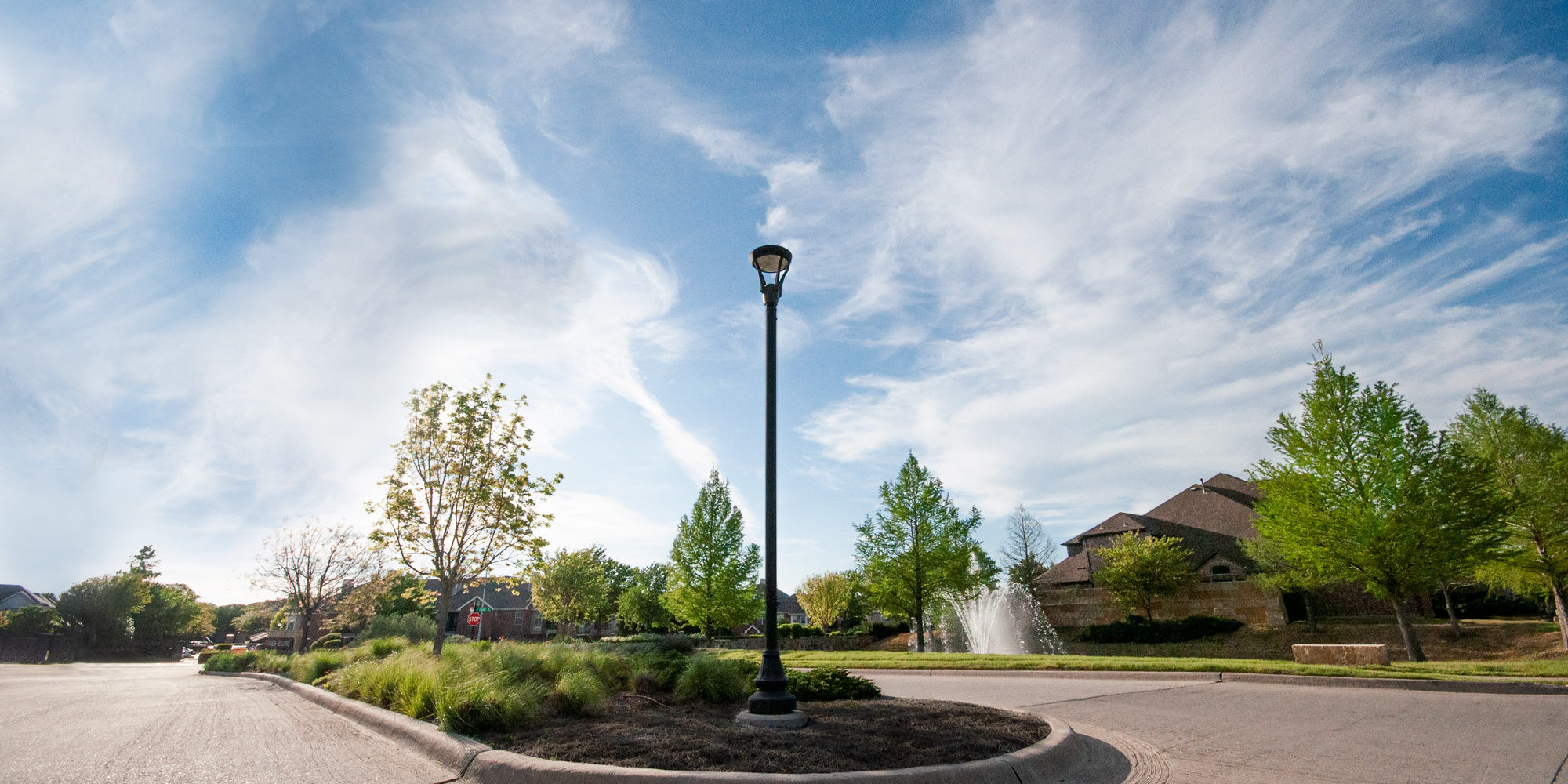Light Distribution in Streetscape Design
Memorable streetscapes are the result of multiple design components working together to compliment the surrounding architecture and nature. Light posts are a unique component in this mix, as they serve as part of the aesthetic during daylight hours and provide the light required to achieve the desired nighttime visual design.
Placement of the post tops, the height of the pole, the globe’s design, and the number of lumens delivered are important decisions that contribute to a successful streetscape design. Light distribution is also an important consideration to attain the desired result during dark hours.
Successful outdoor lighting designs are more than selecting fixtures based on style and brightness. Every outdoor space is unique, and where the light is distributed can make or break the desired aesthetic and impact the safety of pedestrian and vehicle traffic. Dark spots, glare, and light trespass are all issues to avoid when developing the lighting scheme.
Light Distribution Patterns
Post top light fixtures are listed with a specific light distribution type. Understanding and using the right lighting distribution types for different applications helps deliver attractive, safe lighting environments. The various types of light distribution are based on the pattern the light casts on the desired surfaces and the amount of light delivered along vertical angles. The Illuminating Engineering Society of North America (IES) identifies five light distribution patterns, referred to as Type I thru Type V. These patterns allow lighting designers to place light very precisely in the desired areas by distributing the light directionally in defined conical shapes. Types I thru IV spread light in a specific direction, and Type V distributes light omnidirectionally in a circle or square pattern.
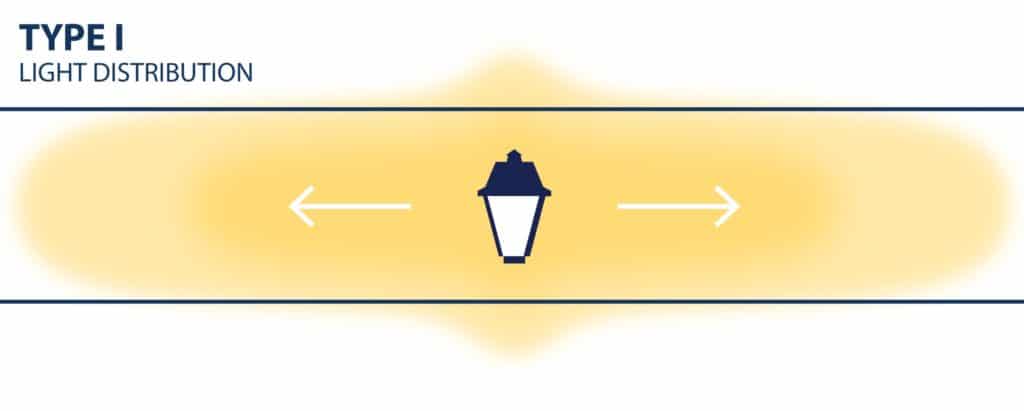
Type I Light Distribution – Sidewalks and Pathways
When selecting a post top light for walkways, paths, and sidewalks, the Type I directional distribution pattern is ideal. Perfectly suited for pedestrian footpaths where the light pole can be in the center of the area intended to be illuminated, e.g., landscaped islands that divide a two-way path. Type I is a lateral distribution with two primary light concentrations that extend in opposite directions. Type I distribution is a broad, symmetrical light where the distribution pattern’s width is about equal to the fixture’s height.
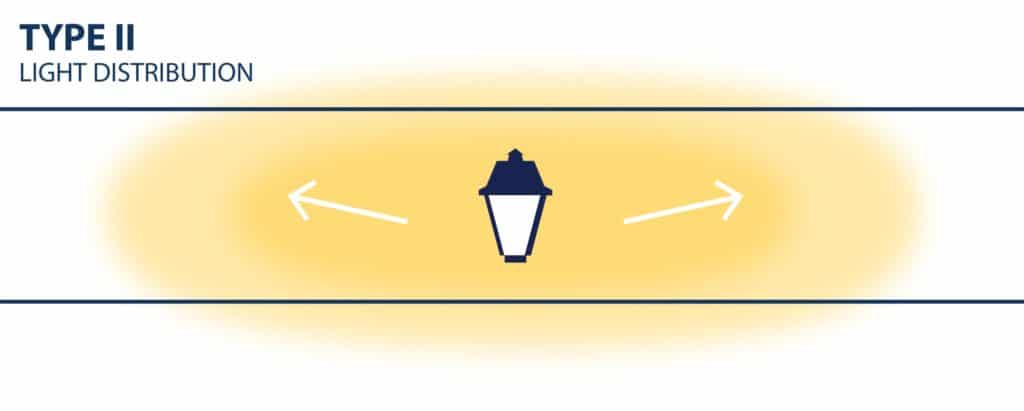
Type II Light Distribution – Side Streets, Wide Walkways and Alleys
When the area requiring light is wider than the standard walkway or sidewalk, or when the light pole cannot be placed in the center of the area to be lit, a Type II directional distribution is likely the preferable choice. Type II post-tops have a wider distribution and are often installed at the edge of a wide pathway, alley, or street. Type II light poles illuminate an area up to 1.5 times wider than the light source’s mounting height. A pole with a light source that is 10 feet high will cast light up to 15 feet wide on the area below.
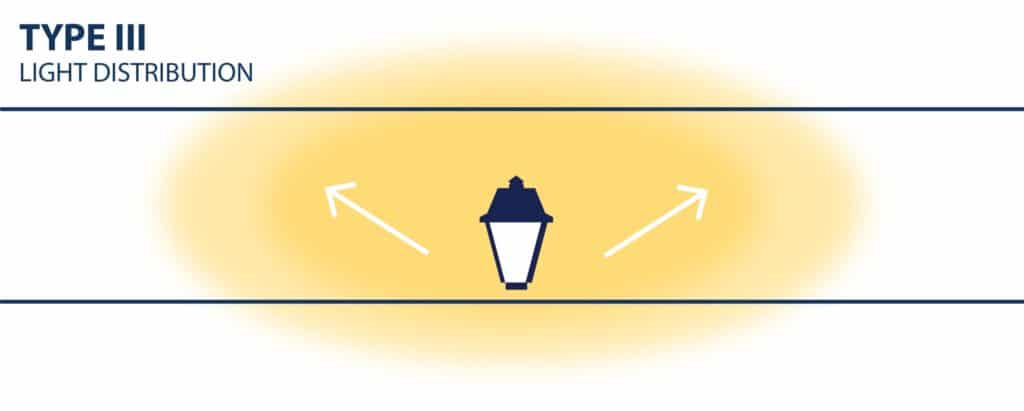
Type III Light Distribution – Parking Areas, Two-Way Streets and Defined Public Gathering Spaces
Type III directional light distribution is often utilized in parking lots, two-way streets, and open public areas where the light needs to be directionally cast to avoid illuminating unnecessary regions. Type III light poles will distribute light about 2.75 times wider than the top of the pole. For example, a light source that is 8 feet above the ground will spread light 22 feet away from the pole’s base.
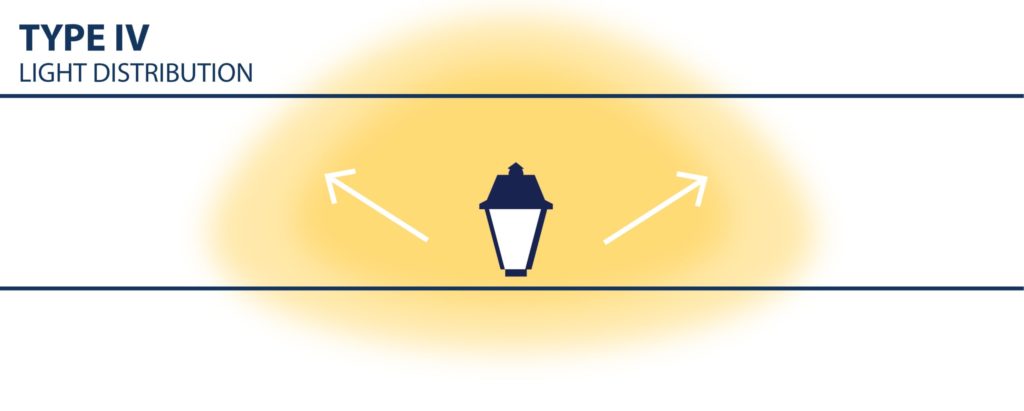
Type IV Light Distribution – Large Parking Area Boundaries, Wide Roads and Business Properties
Like Type III fixtures, Type IV post-tops will also distribute light 2.75 times further than the height of the light source, but Type IV’s will create a more rounded, less flat, or horizontal distribution. This outward push from the light pole allows for very little light to fall “behind” the pole or in the unintended direction. This design enables a large field of light distribution without risking light trespass into unwanted areas or into a neighboring property that should not be illuminated. The shape of Type IV light fixtures is often referred to as a semi-circle and is ideal for large parking areas, wide roadways, business properties, or large public spaces with well-defined boundaries.
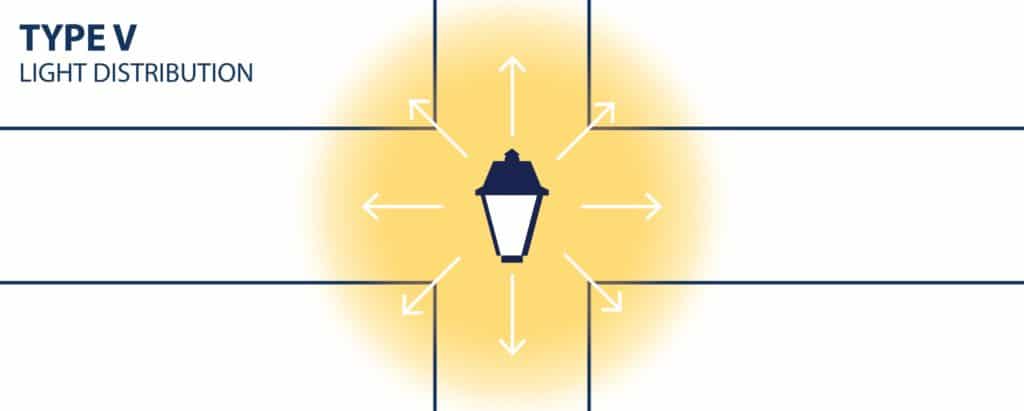
Type V Light Distribution – Omnidirectional, Evenly Distributed Light
For lighting applications where directional control is unnecessary, Type V is typically the most efficient distribution style to illuminate as much space as possible. The Type V pattern distributes light evenly in all directions creating the expected round or square pattern. Type V fixtures distribute the light at the same intensity at all angles and are ideal for placement around locations within large parking lots other commercial areas. A Type V light distribution pattern would be ideal for mounting in the center of the intersection of pathways or in the center island of a streetscape design where two roads intersect.
Learn more about featured light poles for your streetscape plans here.
Brandon Industries—Quality Streetscape Solutions™
Brandon Industries has produced high-quality streetscape solutions since 1987. They are proud to offer a wide selection of beautiful, high-performance streetlamps, decorative signage, and site amenities that will add finish and character to every outdoor space.


